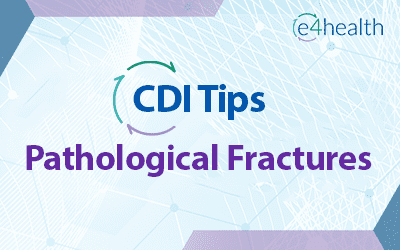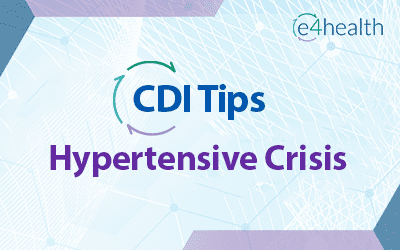Coding and CDI Tips
Sharing knowledge, experience, innovations and best practices to help organizations keep pace in the ever-changing healthcare industry
Coding and CDI Tips
Coding Tips: New Codes for Sickle Cell Disease with Dactylitis
New Codes for Sickle Cell Disease with Dactylitis (Valid for October 1, 2023 discharges)• D57.04 Hb-SS disease with dactylitis• D57.214 Sickle-cell/Hb-C disease with dactylitis• D57.414 Sickle-cell thalassemia, unspecified, with dactylitis• D57.434 Sickle-cell...
Coding Tips: Complication Comorbidity Update
Complication Comorbidity UpdateSocial Determinants of Health (SDOH) codes Z59.00, Homelessness unspecified, Z59.01, Sheltered homelessness and Z59.02, Unsheltered homelessness will be considered CC’s (complication/comorbidity) beginning with October 1, 2023...
CDI Tips & Friendly Reminders: Pathological Fractures
Pathological FracturesDefinition: A bone fracture that occurs without adequate trauma, caused by an underlying disease.Diagnostic CriteriaIdentified in Radiology/Diagnostic Imaging such as X-Ray, CT, MRI, or bone scans. There are various underlying causes for...
Coding Tips: New Code for Resistant Hypertension
New Code for Resistant Hypertension (Valid for October 1, 2023 discharges)I1A.0 Resistant hypertension May be documented as: Apparent treatment resistant hypertension, Treatment resistant hypertension, True resistant hypertension. The ICD-10-CM Tabular instruction...
CDI Tips & Friendly Reminders: Hypertensive Crisis
Hypertensive CrisisDefinition: HTN: Systolic blood pressure (SBP) of 130mm Hg or more and/or diastolic blood pressure (DBP) of more than 80mm Hg HTN Crisis: Generic term to describe hypertensive urgency or hypertensive emergency, typically seen with elevated blood...
Decoding V28 Transition: Key Takeaways from Journal of AHIMA
Medicare Advantage is on the brink of a significant restructuring as it transitions from V24 to V28 of the hierarchical condition categories (HCCs) risk adjustment model. In a recent Journal of AHIMA article, I partnered with Jeanie Heck, BBA, CCS, Education...



